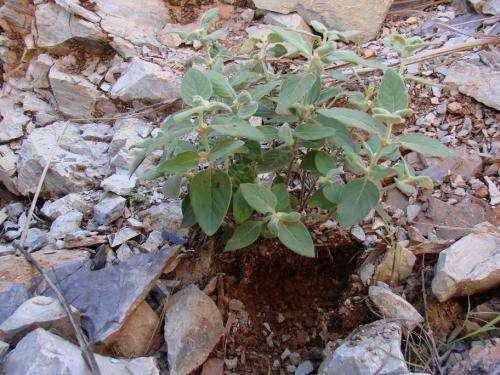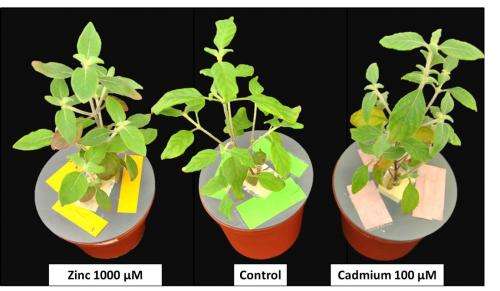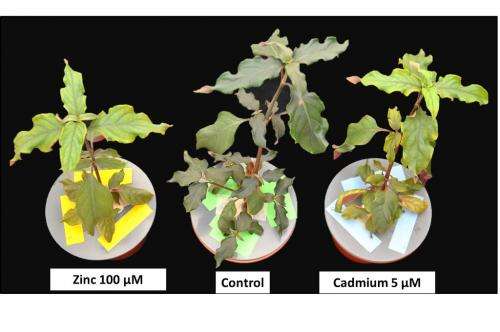First South American plant for purifying soils contaminated with zinc and cadmium

Scientists from Wageningen (NL) and Lavras (Brazil) have found the first South American plant that can be used for purifying South American soils contaminated with the heavy metals zinc and cadmium. Native plants are strongly preferred over exotic plants for this purpose as they reduce the risk of introducing an invasive species that can turn into a pest. The plant, Gomphrena claussenii, easily grows on contaminated soil near zinc mines and takes up large amounts of heavy metals in its leaves and stems. This makes it quite suitable for the purifying of South American soils.
There are soils all over the world polluted with heavy metals – often through human activity. Cadmium in particular is very harmful to humans and animals and can cause cancer in high concentrations. By growing plants that take up a lot of heavy metals, the contaminated soil can be cleaned in an eco-friendly way known as 'phytoremediation.' An important condition is that the plants used are able to grow well in the relevant soil, and are not themselves poisoned by the heavy metals.
Plants that can withstand heavy metals are most easily found by studying what already grows on contaminated soils, where plant species that can resist the pollution will win out over more sensitive plants. However, a plant that is capable of growing in contaminated soil is not automatically a plant that stores heavy metals.
The scientists, led by Mina T. Villafort Carvalho from Wageningen University, part of Wageningen UR (University & Research Centre), discovered many plants of the species Gomphrena claussenii near a zinc mine in the state of Minas Gerais in Brazil. They examined the plants in the lab, comparing them to the closely related Gomphrena elegans. "Our first question was to check that the G. claussenii plants did not suffer from high concentrations of heavy metals," Carvalho remembers. "The claussenii plants were indeed found to grow well, while G. elegans plants wasted away completely at high concentrations of zinc and cadmium."

Out of the two species, the G. claussenii plants were also observed to be better at taking up heavy metals than G. elegans plants – up to thirty times better for zinc and twenty times better for cadmium. The leaves of the plants ultimately contained almost 1% zinc and more than 0.1% cadmium. The G. claussenii plants store the heavy metals proportionately more in the leaves and stems, and less in the roots, than the G. elegans plants. Carvalho: "This is important as only the leaves and stems can be harvested. In other words, when the G. claussenii plants are removed much more zinc and cadmium is removed with them."

If the concentrations of heavy metals in the Gomphrena claussenii plants are compared with those in other plants suitable for the purification of contaminated soils, for example in Europe, then Gomphrena claussenii is not necessarily the best. However, the plant grows fast and creates much more biomass than any other plants that take up zinc or cadmium – and therefore absorbs the most metal from the ground per plant. Scientists estimate that removal of about 5-15 kg of cadmium per hectare per year is entirely realistic. This would cause many contaminants to be brought below minimum safety levels within five years. According to the scientists, it would therefore be worthwhile to conduct practical research into the purifying effect of Gomphrena claussenii in South America. In addition, further research might provide insight into the mechanism by which the plant absorbs the heavy metals without poisoning itself.
More information: www.frontiersin.org/Plant_Phys … .2013.00180/abstract
Provided by Wageningen University


















